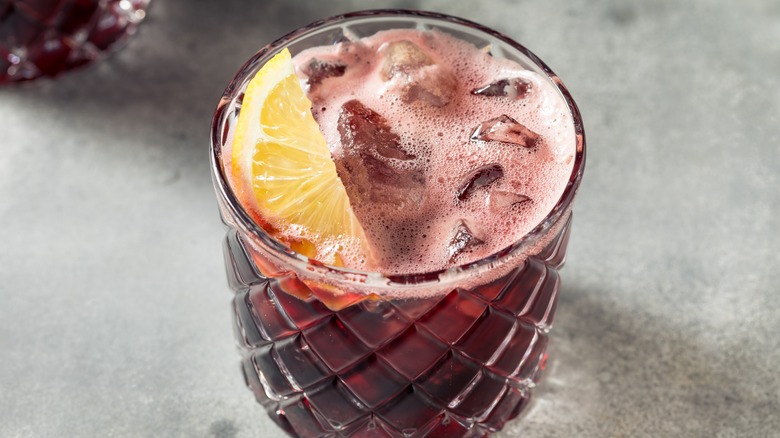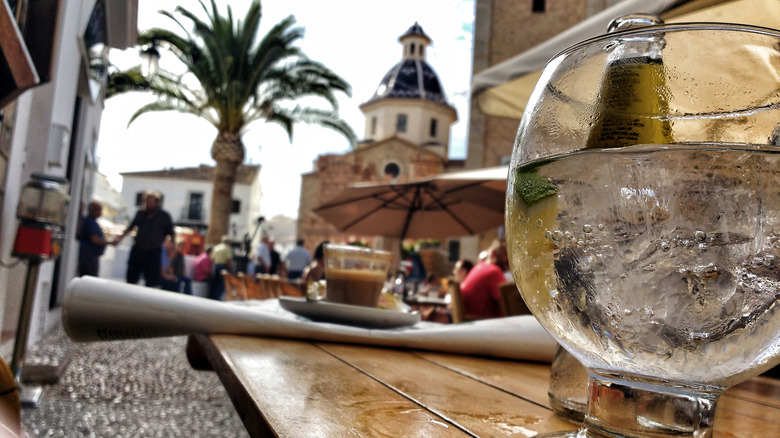Cubatas Are The Simple Spanish Cocktails You Should Know
Even though the number one spot on the World's Best Bars 2022 list is held by the delightful Paradiso, located in Barcelona, Spain isn't necessarily the first country that comes to mind when you think about cocktails. We typically think of wine as the beverage of choice in Spain — from crisp, dry Albariños that hail from Rias Baixas in the northwest to earthy, complex Tempranillos from Rioja and Ribera del Duero or fortified sherry from Jerez in the south.
Spaniards do drink cocktails, though, and we're not talking about frou-frou umbrella drinks. There's a whole world of Spanish cocktails to be explored, and perhaps the best part about them is their simplicity. Versatile, easy to make, and beautiful, either as an aperitivo or with food, Spanish cubatas are the kind of cocktails for which you needn't summon a bartender; these drinks are infinitely flexible and variable, and they're worth a closer look.
A little cubata history
Food & Wine explains that cubatas take their name from a shortened version of the classic Cuba Libre cocktail created after Cuba won independence from Spain. The Cuba Libre is simply rum and Coke, served with lime, but in Spain, the cubata has evolved to include a range of ingredients. Carbonated drinks are the base of Spanish cubatas, from Coke to tonic water and other flavored sodas. Also sometimes referred to as copas or combinados, cubatas are defined as "pretty much any distilled spirit mixed with cola" by Difford's Guide.
Instituto Hemingway notes that mixing red wine with cola dates back to the 1920s, though the drink was popularized and named the Kalimotxo in 1972, after which it spread from its Basque origins throughout Spain.
Many cubatas are gin-based, which makes sense, given that Spain is the largest per-capita consumer of the juniper-infused spirit (per World Atlas). Saveur notes that there are dozens of gin producers throughout the country, producing a range of styles. In addition to gin, cubatas feature a range of flavors and ingredients, all of which are easy to create at home.
Varieties of cubatas
The "consummate" cubata, according to Food & Wine, is the gin tonic. In addition to the missing ampersand, the Spanish version of the classic cocktail features fresh citrus. Mercado Little Spain notes that the ratio of gin to good quality tonic is typically about 1:4, making the cocktail lighter in alcohol than the standard gin & tonic. The cocktail is typically served in a goblet or balloon wine glass, and Alcohol Professor points out that bitters are sometimes used to add complexity to the gin tonic.
The aforementioned Kalimotxo isn't the only cubata made with wine. Others include the tinto de verano, which mixes red wine and lemon soda, as well as the rebujito, a refreshing combination of sherry, fresh mint, and lemon-lime soda that's popular in the southern parts of Spain. These variations on the wine spritzer deliver plenty of delightful flavor and are relatively low in alcohol, making them the perfect cubata to enjoy on a terrace in sun-drenched Spain. Paired with a few selections from our favorite tapas, your housemade cubatas complete the perfect Spanish menu, ideal for entertaining a crowd.


